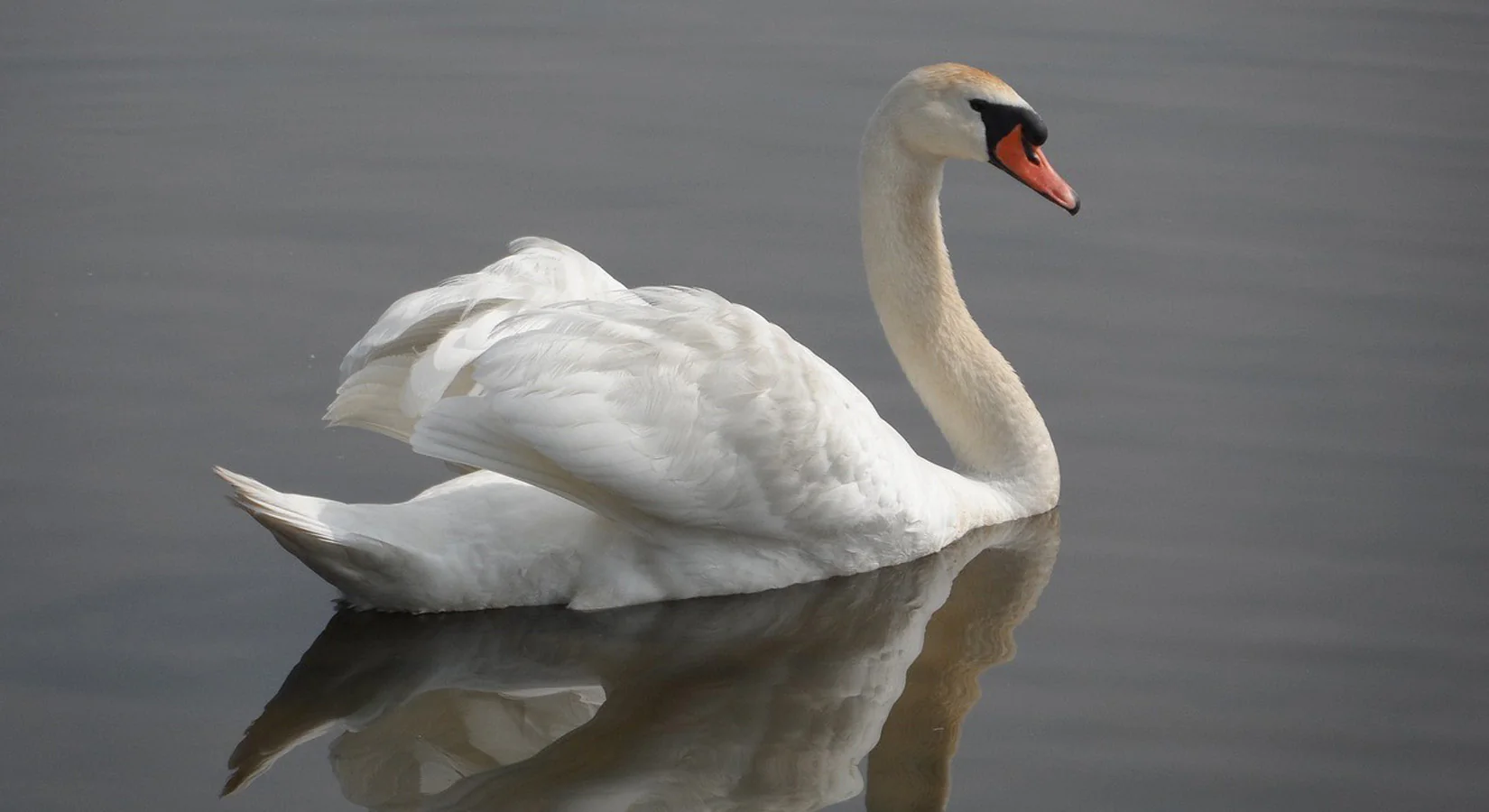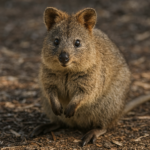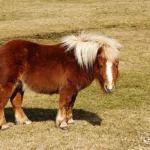
Swans, with their graceful presence and captivating beauty, have long captured the imagination of people around the world. From their legendary loyalty in love to their remarkable abilities in the air and water, swans are celebrated for their unique characteristics and cultural significance. In this exploration, we delve into 25 fascinating facts about swans, shedding light on their behavior, biology, and ecological importance. Join us as we embark on a journey to discover the enchanting world of these iconic waterfowl.
Lovebirds for Life: Swans are renowned for their lifelong monogamous partnerships, with some pairs remaining together for over 20 years. This commitment is particularly notable during breeding seasons when the bonded pair engages in elaborate courtship displays, including synchronized swimming and mutual preening. Once paired, swans will typically remain together year-round, sharing parental duties and defending their territory against intruders. This enduring bond reflects the strong social structure and cooperative behavior exhibited by these graceful birds.
Silent Treatment? Nope! Despite their serene appearance, swans can be surprisingly vocal, using a variety of sounds to communicate with each other and ward off potential threats. Their vocalizations range from hissing and trumpeting to growling, with each sound serving a specific purpose. Hissing is often used as a warning signal to deter predators or assert dominance, while trumpeting may accompany aggressive behavior or territorial disputes. These vocalizations play a crucial role in maintaining social cohesion within swan communities and signaling their presence to other wildlife in their habitat.
Winging It: A swan’s wingspan is truly impressive, reaching up to 10 feet (3 meters) in length. This expansive wingspan enables swans to achieve powerful flight, allowing them to soar gracefully across vast distances during migration or patrol their territory with ease. Their broad wings also aid in efficient propulsion through water, making swans adept navigators both in the air and on the water’s surface. This remarkable anatomical feature is a testament to the evolutionary adaptations that have enabled swans to thrive in diverse habitats around the world.
Heavyweight Champions: Among North American flying birds, trumpeter swans reign supreme as the heaviest, with individuals weighing up to 31 pounds (14 kilograms). This substantial weight is supported by their robust skeletal structure and muscular physique, which is necessary for sustained flight and powerful swimming. Despite their impressive size, trumpeter swans are surprisingly agile, capable of taking off and landing with precision and maneuvering gracefully through their aquatic environment. Their heavyweight status underscores their importance as keystone species within their ecosystems, influencing the dynamics of wetland habitats through their foraging and nesting behaviors.
Talking Dirty: The black knob at the base of a swan’s bill, known as a “lappet,” serves both functional and communicative purposes. This fleshy protuberance contains blood vessels and nerve endings, helping regulate the temperature of the swan’s bill and providing sensory feedback during feeding activities. Additionally, the size and prominence of the lappet can indicate the age and social status of an individual swan within its community. Larger lappets are often associated with older, more dominant birds, while smaller lappets may signify younger or subordinate individuals. This subtle yet significant feature contributes to the complex social hierarchy observed among swans.
Underwater Elegance: Swans are not only graceful on the water’s surface but also adept at navigating beneath it. Thanks to air pockets trapped in their feathers, swans can remain submerged for up to 1 minute while foraging for food. This remarkable ability is facilitated by their streamlined bodies and powerful webbed feet, which propel them effortlessly through the water column. By exploiting their underwater environment, swans are able to access a diverse array of aquatic vegetation and invertebrates, supplementing their primarily herbivorous diet with essential nutrients. Their underwater elegance showcases the versatility and adaptability of these iconic waterfowl.
Speedy Swimmers: Despite their stately appearance, swans are capable of swift propulsion through water, reaching speeds of up to 10 mph (16 kph). This surprising agility is achieved through a combination of powerful leg strokes and synchronized movements of their broad, paddle-like feet. Whether engaged in leisurely paddling or rapid pursuit of prey, swans demonstrate remarkable control and efficiency in their aquatic locomotion. Their ability to navigate waterways with speed and precision underscores their status as apex predators within their ecosystem, capable of outmaneuvering potential threats and securing vital resources.
Beneath the Surface: While a swan’s long neck is a defining feature of its graceful silhouette, most of its neck is actually concealed beneath the water’s surface during feeding. This submerged posture allows swans to access submerged vegetation and aquatic organisms that constitute a significant portion of their diet. By extending their necks downward and using their specialized bills to grasp and manipulate food items, swans demonstrate remarkable dexterity and precision in their foraging behavior. This hidden aspect of their anatomy highlights the intimate relationship between swans and their aquatic environment, where they play a vital role in shaping the structure and dynamics of wetland ecosystems.
Feathery Fashionistas: Swans devote considerable time and effort to maintaining the pristine condition of their plumage, engaging in grooming rituals that can last over an hour each day. Using their specialized preen gland, located near the base of their tail, swans distribute oily secretions throughout their feathers, waterproofing them and enhancing their insulating properties. This meticulous grooming not only ensures the health and vitality of their plumage but also contributes to their striking appearance and aerodynamic efficiency. By investing in feather maintenance, swans exemplify the importance of personal hygiene and self-care in the pursuit of optimal performance and well-being.
Royal Reputation: Mute swans have long been associated with royalty and nobility in European culture, symbolizing elegance, refinement, and prestige. Historically, these regal birds were protected by laws that reserved their ownership and hunting rights for the aristocracy, further cementing their status as symbols of wealth and privilege. Today, while mute swans are no longer exclusively reserved for the nobility, they continue to evoke a sense of grandeur and majesty in popular imagination. Their graceful demeanor and graceful demeanor and exquisite beauty have made them enduring icons of aristocratic splendor and cultural heritage throughout the ages.
Swan Soiree: A group of swans is known as a “bevy” or a “herd,” reflecting their social nature and tendency to congregate in large numbers during certain times of the year. These gatherings serve various purposes, including foraging for food, engaging in courtship displays, and seeking safety in numbers against potential predators. The sight of a bevy of swans gliding gracefully across a tranquil lake or river is a testament to the collective strength and resilience of these majestic birds.
Built to Last: Swan eggs are some of the largest bird eggs, measuring up to 4 inches (10 cm) in length. These sizable eggs are carefully incubated by both parents, who take turns warming them in the nest until they hatch. The incubation period typically lasts between 35 to 46 days, during which the parents diligently tend to the eggs, ensuring their viability and protection from potential threats. Once hatched, the cygnets emerge as adorable bundles of fluff, reliant on their parents for warmth, nourishment, and guidance as they embark on their journey of growth and development.
Family Matters: The responsibilities of parenthood are shared equally between both swan parents, who work cooperatively to ensure the survival and well-being of their offspring. From incubating the eggs to feeding and protecting the cygnets, both parents play crucial roles in nurturing the next generation of swans. This shared commitment fosters strong bonds within swan families and reinforces the importance of cooperation and collaboration in raising young. As the cygnets grow and mature under their parents’ watchful care, they learn essential life skills and behaviors that will serve them well in adulthood.
Fearless Flyers: Swans are adept migratory birds, capable of undertaking long-distance journeys spanning thousands of miles each year. Migration allows swans to access seasonal breeding and feeding grounds, following favorable weather patterns and resource availability. Some species of swans, such as the tundra swan, undertake epic migrations from their breeding grounds in the Arctic to wintering areas in more temperate regions. Despite the inherent challenges and risks associated with migration, swans exhibit remarkable resilience and navigational prowess, ensuring their survival across vast and varied landscapes.
Fishy Feast: While swans are primarily herbivores, their diet also includes a variety of animal matter, including insects, worms, and small crustaceans. This opportunistic feeding behavior allows swans to supplement their plant-based diet with essential protein and nutrients found in aquatic invertebrates. By exploiting a diverse array of food sources, swans demonstrate their adaptability and resourcefulness in meeting their nutritional needs. Whether foraging for submerged vegetation or probing the muddy depths for tasty morsels, swans employ a combination of feeding strategies to sustain themselves throughout the year.
Bug Buffet: In addition to larger aquatic prey, swans also indulge in a smorgasbord of insects, worms, and other small invertebrates found in their wetland habitats. These tiny creatures serve as valuable sources of protein and energy, especially during periods of high metabolic demand, such as breeding and migration. Swans use their keen sense of sight and acute awareness to detect and capture elusive prey items, employing a combination of bill manipulation and foot probing to extract them from their hiding places. This diverse diet reflects the opportunistic feeding habits and adaptive flexibility of these versatile waterfowl.
Underwater Ballet: Swans employ a unique feeding strategy known as underwater grazing, in which they use their powerful feet to stir up the bottom sediment and uncover buried food items. By vigorously paddling their webbed feet and sweeping them back and forth along the substrate, swans create a turbulent water column that dislodges and exposes hidden prey. This underwater ballet not only facilitates efficient foraging but also helps aerate the sediment and promote nutrient cycling within the ecosystem. Through their dynamic interactions with their environment, swans play an integral role in maintaining the health and productivity of wetland habitats.
Black is Beautiful: The black swan, native to Australia, is distinguished by its striking black plumage and vibrant red bill. Unlike its more common white counterparts, the black swan represents a distinct species with its own unique evolutionary history and ecological niche. Indigenous to the wetlands and waterways of Australia, black swans have adapted to thrive in diverse aquatic habitats, ranging from coastal lagoons to inland rivers. Their elegant appearance and graceful demeanor make them a captivating sight in their natural habitat, embodying the beauty and diversity of Australia’s avian fauna.
Swan Song? Not Quite: Contrary to popular myth, swans do not sing a mournful melody before meeting their demise. Instead, the notion of a “swan song” likely originated from the vocalizations swans make just before expiring. These sounds, often described as whooping or honking, serve as a natural response to the physiological processes occurring within the swan’s body as it nears the end of its life. While these vocalizations may sound plaintive to human ears, they are simply part of the swan’s instinctual behavior and do not carry any symbolic significance beyond their biological function.
Aquatic Architects: Swans are skilled builders, constructing elaborate nests out of plant material gathered from their surroundings. These nests can reach impressive dimensions, with some measuring up to 6 feet (1.8 meters) in diameter. Constructed primarily by the female swan, or pen, the nest serves as a secure incubation chamber for the eggs and provides a safe haven for the growing cygnets. Situated near the water’s edge, swan nests are carefully positioned to minimize the risk of flooding and predation while maximizing access to food resources. Through their meticulous nest-building efforts, swans demonstrate their ingenuity and resourcefulness in creating a nurturing environment for their offspring.
Symbiotic Success: Swans and certain species of fish engage in a mutually beneficial relationship, where the fish clean parasites from the swan’s feathers, and the swan stirs up food that the fish can then eat. This symbiotic interaction enhances the health and well-being of both parties involved, illustrating the interconnectedness of species within aquatic ecosystems. By collaborating with other organisms in their environment, swans demonstrate their adaptability and ability to forge cooperative relationships that contribute to ecosystem stability and resilience.
Feathered Friends: Swans are known to form friendships with geese and other waterfowl species, forging social bonds that transcend species boundaries. These interspecies friendships are often observed in mixed flocks congregating in shared habitats, where individuals of different species engage in mutual grooming, synchronized swimming, and collective foraging. Despite their taxonomic differences, swans and geese share common ecological niches and behavioral tendencies, facilitating the formation of lasting friendships based on mutual trust and companionship. Through these cross-species interactions, swans exemplify the capacity for empathy and cooperation inherent in social animals.
Cultural Connections: Swans have been deeply ingrained in human culture for centuries, serving as symbols of love, purity, and grace in mythology, folklore, and art. From ancient legends depicting swans as celestial beings to modern interpretations portraying them as embodiments of romantic ideals, swans have captivated the human imagination across diverse cultures and time periods. Their elegant appearance and serene demeanor have inspired countless works of literature, music, and visual art, perpetuating their iconic status as emblematic creatures of beauty and transcendence.
Conservation Challenge: Despite their cultural significance and ecological importance, swans face numerous conservation challenges, including habitat loss, pollution, and human disturbance. The degradation of wetland habitats, caused by urbanization, agriculture, and industrial activities, poses a significant threat to swan populations worldwide, disrupting their breeding, foraging, and migratory behaviors. Pollution from chemical contaminants and plastic waste further exacerbates the plight of swans, contaminating their food sources and compromising their health. Additionally, human activities such as recreational boating, fishing, and hunting can disrupt swan habitats and disturb breeding colonies, leading to population declines and localized extinctions. Addressing these conservation challenges requires concerted efforts to protect and restore swan habitats, mitigate human impacts, and promote sustainable management practices that safeguard the long-term survival of these iconic waterfowl.
Despite these conservation challenges, efforts are underway to protect and conserve swan populations and their habitats. Conservation organizations, government agencies, and local communities are collaborating to implement various initiatives aimed at mitigating threats to swans and promoting their recovery. These efforts include habitat restoration projects, wetland conservation programs, and pollution control measures designed to safeguard critical swan habitats and ensure the availability of essential resources. Additionally, public awareness campaigns and educational outreach efforts raise awareness about the importance of swans and inspire stewardship among the general public. By working together to address the underlying causes of swan decline and implementing targeted conservation actions, stakeholders can help secure a brighter future for these majestic birds and the ecosystems they inhabit.
Frequently Asked Questions about Swans:
Are swans really aggressive?
Swans can be aggressive, especially during nesting season (spring and summer) when they are protecting their young cygnets. They will hiss, flap their wings and even chase away perceived threats, which can include humans or other animals. However, their aggression is usually a defensive behavior and they won’t attack without provocation. It’s best to admire swans from a distance and avoid getting too close to their nests.
Do swans mate for life?
Swans are known for their long-term partnerships, often staying with the same mate for many years, sometimes even for life. They establish their pair bond through elaborate courtship rituals that involve synchronized swimming and wing displays. However, if a mate dies or the pair fails to reproduce successfully for several seasons, they may separate and find a new partner.
What do swans eat?
Swans are omnivores, meaning they eat both plants and animals. Their diet primarily consists of aquatic plants like pondweed, water lilies, and reeds. They also consume the roots, tubers, and seeds of these plants. Additionally, swans will supplement their diet with insects, worms, small fish, and crustaceans, especially during breeding season when they need extra protein.
Can swans fly?
Yes, swans are strong fliers despite their large size. They have powerful wings that can propel them through the air at speeds of up to 10 mph (16 kph) during migration. However, swans need a running start on water to take off and can be clumsy on land due to their long necks and heavy bodies. They also go through a molting period in summer where they lose their flight feathers and are temporarily grounded for several weeks.
Why are swans white?
The white coloration of most swan species is a result of a lack of pigment in their feathers and the presence of air pockets that scatter light, creating a bright white appearance. This white plumage is thought to serve several purposes, including thermoregulation, camouflage in snowy environments, and communication within their species. Black swans, however, are an exception and have a dark pigmentation throughout their feathers.








